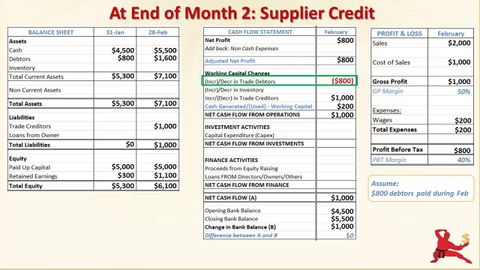財務諸表の例。収益性、運転資本。債務者と債権者 (Financial Statements Example: Profitability; Working Capital: Debtors and Creditors)
陳虹如 が 2021 年 01 月 14 日 に投稿  この条件に一致する単語はありません
この条件に一致する単語はありません- v.t.(人を騙すために)ふりをする : 装う;仮定する : 推測する;(責任 : 任務などを)負う : 引き受ける
- n. (c./u.)グロス(単位 : 1グロスは12ダース);合計;総重量
- v.t.総収益をあげる
- adj.気持ち悪い;総計の;下品な
US /ˈɪmˌpækt/
・
UK /'ɪmpækt/
- n.影響;衝撃
- v.t./i.衝突する;影響を与える;埋伏する
エネルギーを使用
すべての単語を解除
発音・解説・フィルター機能を解除

